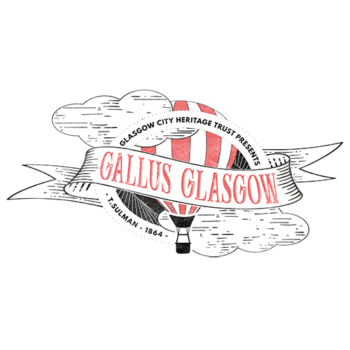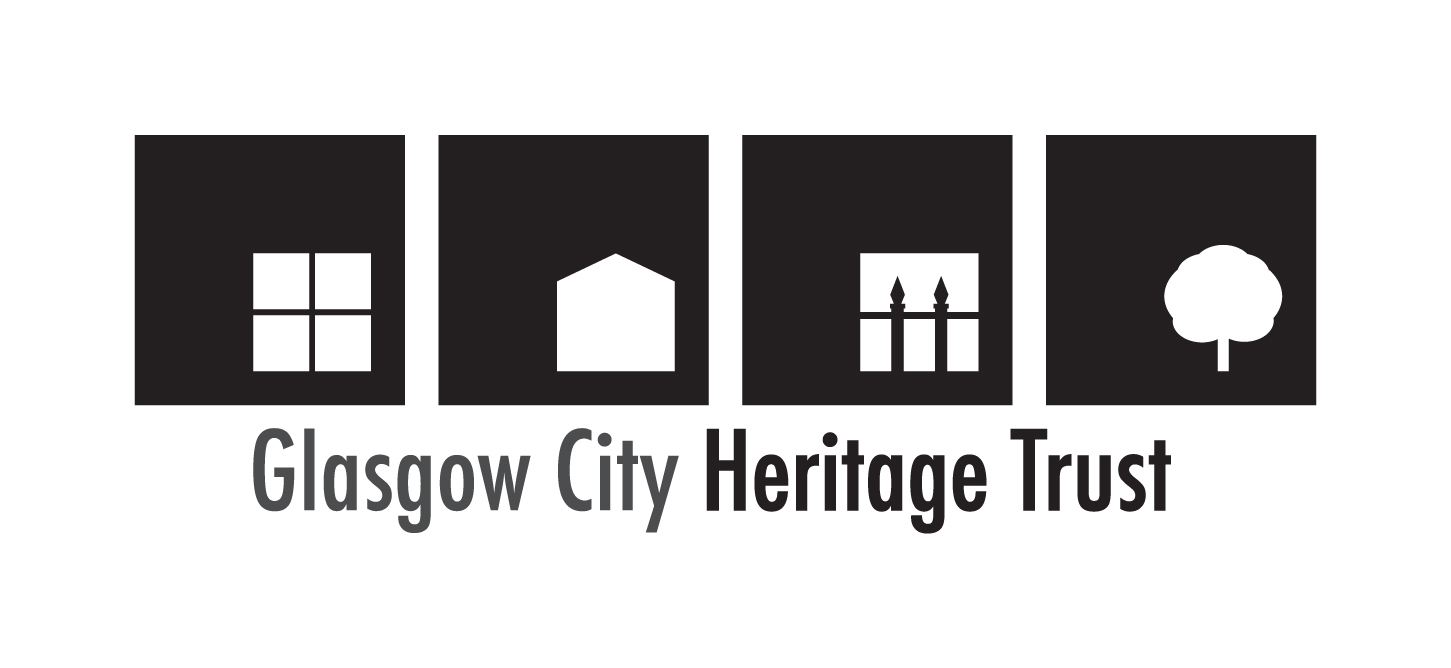
Gallus Glasgow is a digital outreach project, managed and delivered by Glasgow City Heritage Trust. It explores the development of Glasgow during the ‘Gilded Age’ of the Victorian period, through the eyes of Thomas Sulman, illustrator of the Bird’s Eye View of Glasgow, 1864.
Between 1864 and 1914 Glasgow was a thriving centre with an international reputation for design and innovation in industries as varied as textile manufacture and shipbuilding. We believe that this period is crucial to the understanding of Glasgow’s Victorian heritage and the promotion of Glasgow as a world city, and through this project we will be celebrating its vibrant artistic and industrial history, encouraging greater understanding of this ‘gilded age’ within Glasgow’s communities, and promoting Glasgow as a place for cultural and historic tourism.
The Trust has digitised, annotated and animated its copy of Thomas Sulman’s Bird’s Eye View of Glasgow, 1864 to bring Glasgow’s built heritage to life and to engage new audiences in the history and heritage of the city. The map and the animation will form the foundation of a seven month long programme of outreach and events from September 2021 til March 2022.
Variously known as Bird’s Eye Views, picture plans, prospect views, panoramas, and cityscapes, these representations of great cities became hugely popular in the mid-19th century.
Produced almost four decades before the first aeroplane took to the skies, the tremendous scale and intricate level of detail of this bird’s-eye view of Glasgow is truly mind-blowing.
The view, published on 24 March 1864 as a supplement in the Illustrated London News, includes the entirety of central Glasgow looking north from the Southside of the River Clyde towards the Campsie Fells, as seen from a fixed point high above the city.
It is thought that the advent of hot air ballooning in the 1820s played a major role in the popularisation of these panoramas. Granting a higher vantage point increased the field of view of the artist allowing for greater sweep and broader perspective. However, the vast majority of the draughtsmanship would still have taken place at ground level and been informed by contemporary mapping.
This ground level mapping is evident in the remarkable level of architectural detail visible in the civic buildings, monuments and churches captured in this view. The perspective has been altered to exaggerate the affluent north of the city, and streets widened to allow these architectural features to be seen in full.
Rather fascinatingly, recognisable landmarks throughout the city such as the the City Chambers and the Glasgow School of Art have yet to be built, allowing us to see in great detail what existed there before.
The frequently deepened Clyde teems with sail and steam shipping and its banks are packed with cranes and warehouses. The smokestacks of the thriving chemical industry of the era are seen to the northeast, a key driver of the westward expansion of the city. The foundations for new tenement buildings around Kelvingrove Park are further evidence of this westward movement. Every section of this panorama provides information for the viewer.
Birds Eye Views of cities in Britain began with a view of Oxford by Georg Hoefnagel in 1575, but it is with Sulman’s Bird’s Eye View of Glasgow they arguably achieved their finest expression.
Glasgow City Heritage Trust has held a copy of the map, displayed on the wall in its offices, for several years. A high resolution digital scan was made, which has been digitally restored to reinstate the contrast and vibrancy of the colours. Many of the surviving maps are black and white, but this copy is hand coloured. Each of the hand coloured maps is subtly different, as can be seen by comparison with the version held by the University of Glasgow.
This project was made possible by generous funding from Hugh Fraser Foundation, Norbulk Shipping UK Ltd, Culture & Business Scotland Fund and Glasgow City Heritage Trust.




We would like to thank the following institutions and individuals for their generous help with the project:
- The funding bodies for making this project possible.
- The Outreach Committee at Glasgow City Heritage Trust for their patience and faith in us.
- Our design team at studio SUUM for holding our hands through this process and making our vision come to life. Special thanks to Pauline McCloy Turtle at SUUM for her contributions to the ‘Meet the Family’ section.
- Annie Hendry for her unfailing support and social media and marketing expertise.
- Fergus Sutherland for allowing us to pick his brains and sharing his incredible knowledge of Glasgow’s heritage.
- Sonny Maley and the staff at the Maps, Official Publications & Statistics Unit, at University of Glasgow Library for supporting us in the early stages of the project and for sharing their knowledge and enthusiasm.
- Douglas Annan at the T Annan Photographic Studio for his generous permission to use Thomas Annan photographs.
- The many friends of the Trust on social media who have kindly shared news of the project with their own networks.



